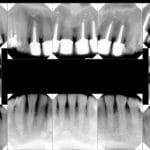This comprehensive guide will equip you with the knowledge and skills to confidently use the Spanish reflexive verb lavarse (to wash oneself). Whether you’re a beginner or looking to refine your skills, we’ll cover everything from basic conjugation to nuanced usage, including common expressions and potential pitfalls.
Understanding Lavarse
Lavarse, meaning “to wash oneself,” is a reflexive verb, a crucial concept in Spanish grammar. This means the action of the verb is directed back to the subject. Unlike lavar (to wash), which acts upon a separate object (e.g., “Lavo el coche” – I wash the car), lavarse indicates self-washing (e.g., “Me lavo” – I wash myself). This distinction is essential for accurate communication.
Reflexive Pronouns: The Cornerstone of Lavarse
Reflexive pronouns are inseparable companions to lavarse. They signal who is performing the action and receiving it. These pronouns – me, te, se, nos, os, se – always precede the conjugated verb and change according to the subject:
- Me (myself)
- Te (yourself)
- Se (himself/herself/itself/yourself – formal)
- Nos (ourselves)
- Os (yourselves – informal plural, Spain)
- Se (themselves/yourselves – formal plural)
Conjugating Lavarse: A Step-by-Step Guide
Lavarse follows the regular -AR verb conjugation pattern, similar to hablar (to talk) or cantar (to sing), but with the addition of those essential reflexive pronouns. Here’s a breakdown:
- Determine the Tense: Identify the appropriate tense based on when the action occurs (present, past, future, etc.).
- Select the Reflexive Pronoun: Choose the correct pronoun based on the subject performing the action.
- Conjugate Lavar: Conjugate the stem lav- according to the chosen tense and subject.
- Combine: Place the reflexive pronoun before the conjugated verb.
Lavarse Conjugation Table: Essential Tenses
This table provides conjugations for common tenses. For a complete breakdown of all 18 Spanish tenses, including subjunctive and progressive forms, see our comprehensive lavarse conjugation guide.
| Tense | Conjugation Example | English Translation |
|---|---|---|
| Present | Me lavo | I wash myself |
| Preterite | Me lavé | I washed myself |
| Imperfect | Me lavaba | I used to wash myself / I was washing myself |
| Future | Me lavaré | I will wash myself |
| Conditional | Me lavaría | I would wash myself |
| Present Perfect | Me he lavado | I have washed myself |
Lavarse in Context: Practical Examples
- Te lavas el pelo. (You wash your hair.)
- Se lava la cara. (He/She washes his/her face. Also: You wash your face – formal.)
- Nos lavamos las manos antes de comer. (We wash our hands before eating.)
- Me estoy lavando la cara. (I am washing my face – present progressive)
- Me lavé las manos después de trabajar en el jardín. (I washed my hands after working in the garden – preterite)
The Imperative Mood: Commands with Lavarse
The imperative differs slightly. In affirmative commands, the pronoun attaches after the verb (e.g., “¡Lávate las manos!” – Wash your hands!). In negative commands, it remains before the verb (e.g., “No te laves las manos” – Don’t wash your hands).
Lavar vs. Lavarse: A Critical Distinction
It’s vital to differentiate between lavarse and lavar. Lavarse always involves the subject performing the action on themselves. If you’re washing something else, use lavar (e.g., “Lavo el coche.” – I wash the car). This distinction, driven by the reflexive pronoun, is fundamental to Spanish grammar. Some experts believe that the use of reflexive pronouns evolved as a way to emphasize the subject’s direct involvement in the action, similar to the use of “myself” or “yourself” in English. There’s no monstrous figure from history whose name is quite as synonymous with cruelty as Madame Delphine Lalaurie. Her sadistic behavior and the gruesome discoveries made in her home in the 1830s shocked the nation. Marie Laveau, a prominent figure in Marie Lalaurie‘s life, is an equally fascinating character of her time. While the evolution of reflexive verbs is still being researched, their usage in modern Spanish is essential for conveying accurate meaning.
Beyond the Basics: Nuances and Idioms
Lavarse extends beyond literal washing. The idiom “lavarse las manos (de algo)” translates to “to wash one’s hands (of something),” signifying a refusal to take responsibility, much like its English equivalent. Understanding these idiomatic uses enriches your communication and provides a deeper cultural understanding. Ongoing research in linguistics suggests that reflexive constructions like this probably originated from the need to express actions directed back towards the subject.
Keep Practicing!
Mastering lavarse, like any aspect of language learning, requires consistent practice. Use it in various tenses and contexts to build fluency. Online resources, apps, and language partners can provide valuable support. Embrace mistakes as learning opportunities. Remember, even native speakers make errors occasionally.
Key Takeaways
- Lavarse means “to wash oneself” and is a reflexive verb.
- Reflexive pronouns (me, te, se, nos, os, se) are crucial and precede the verb.
- Conjugation depends on the tense and subject.
- Lavarse has both literal and figurative (idiomatic) uses.
- Mastering lavarse is a significant step towards fluency.
- Senior at What Age: Benefits & Eligibility Guide - March 29, 2025
- Unlocking Senior Benefits: How Old is a Senior? Your Complete Guide - March 29, 2025
- Master Russian Politeness:A Guide to Saying Please - March 29, 2025
















